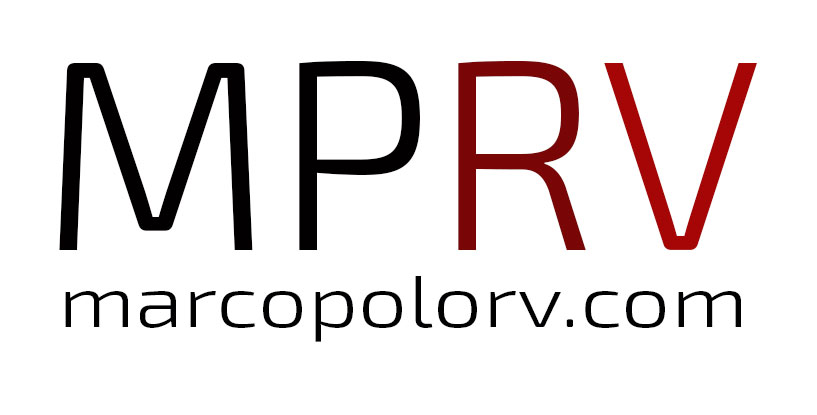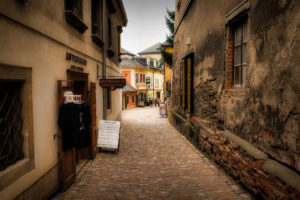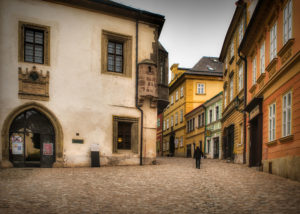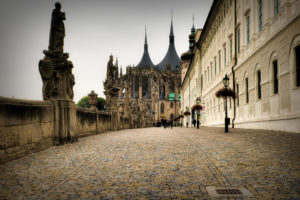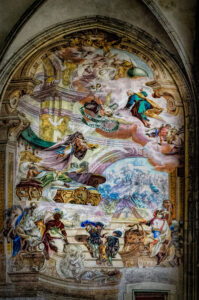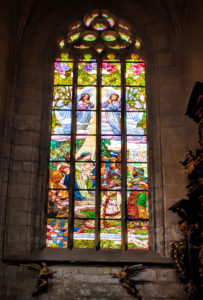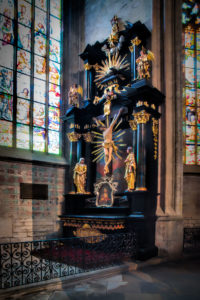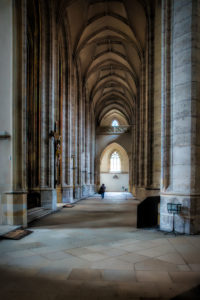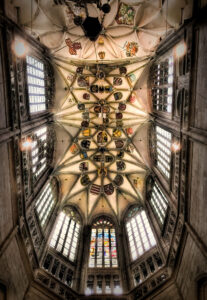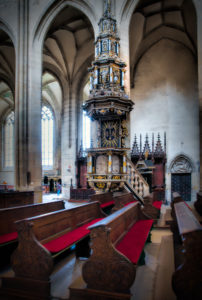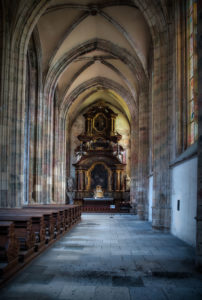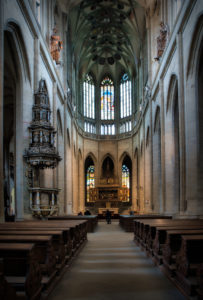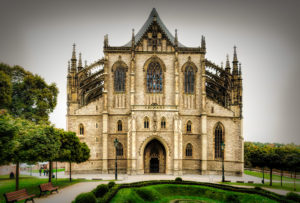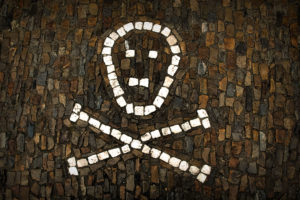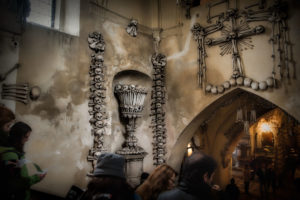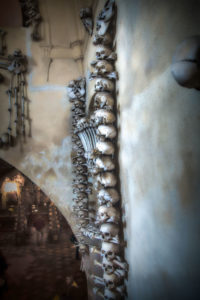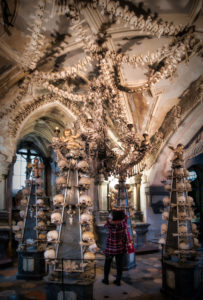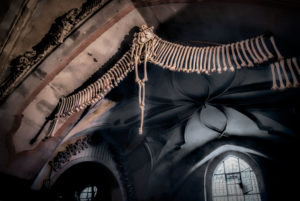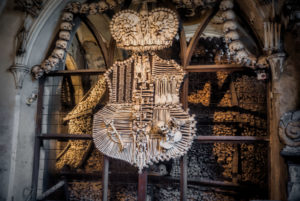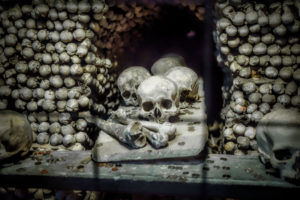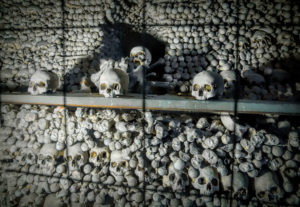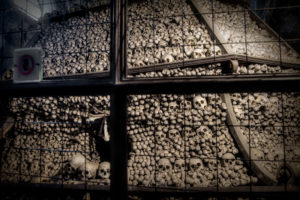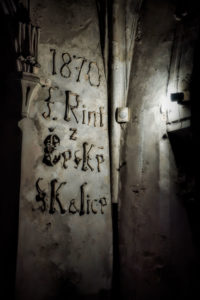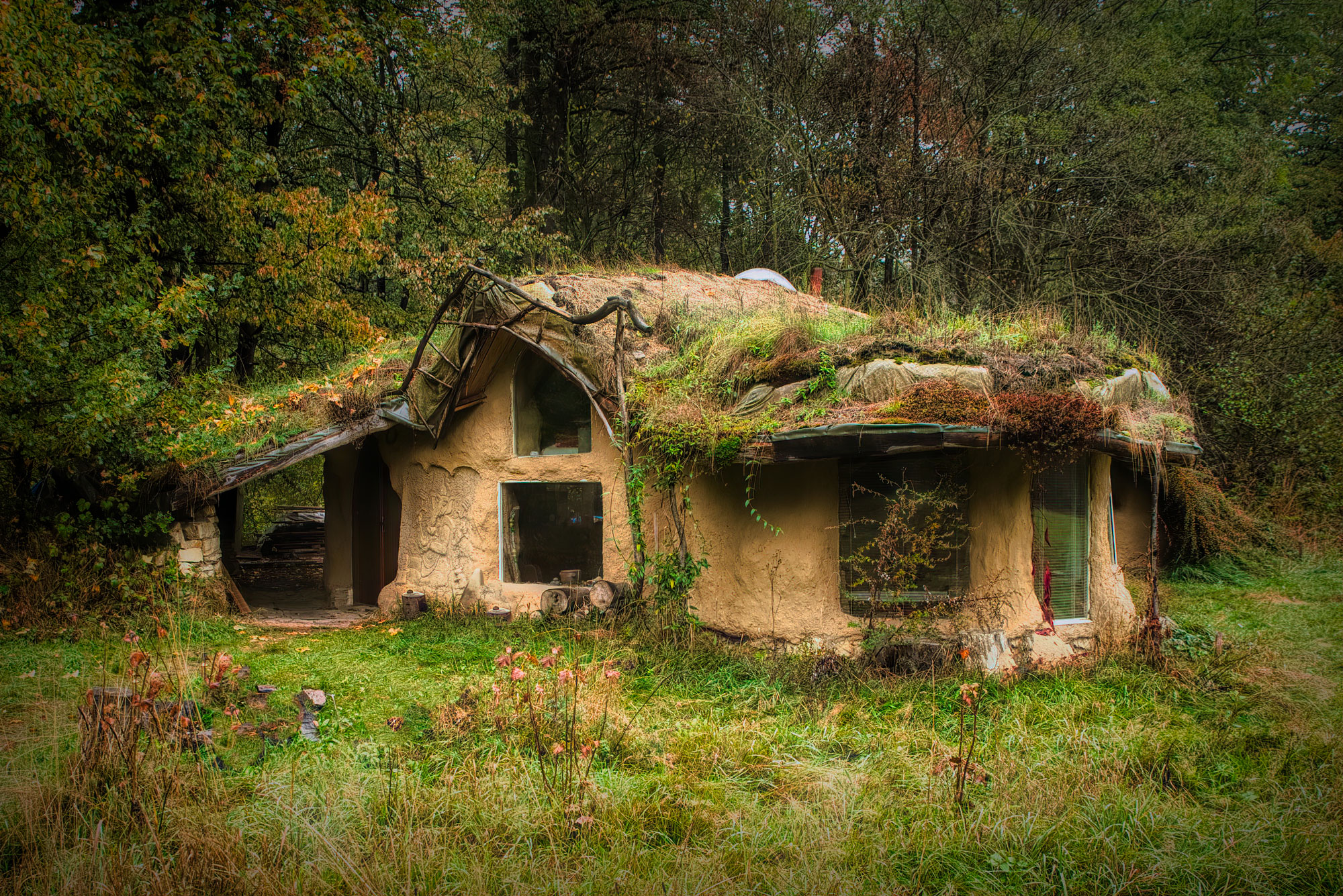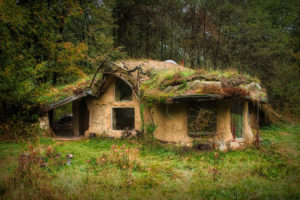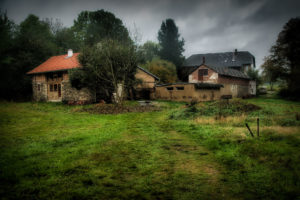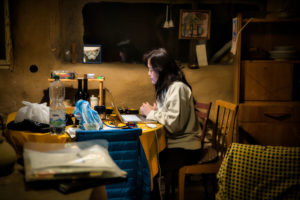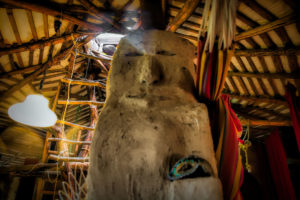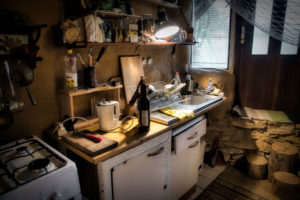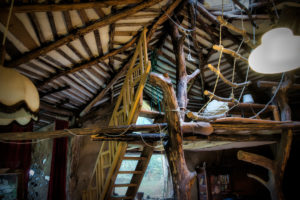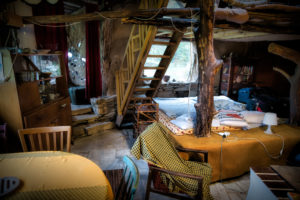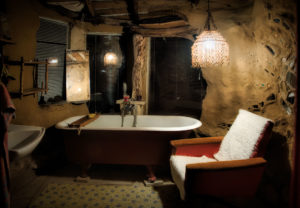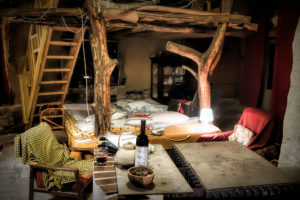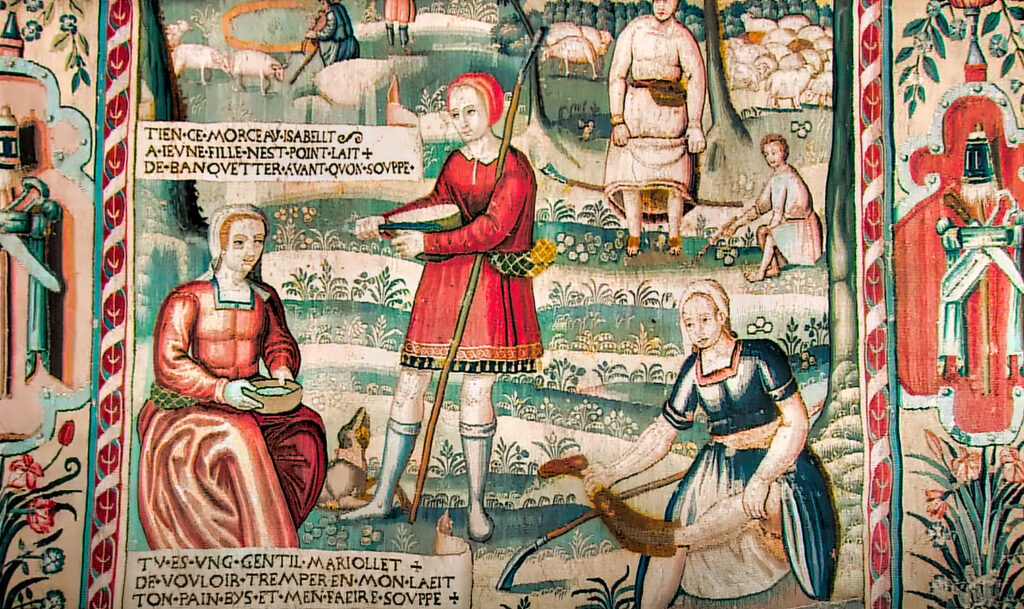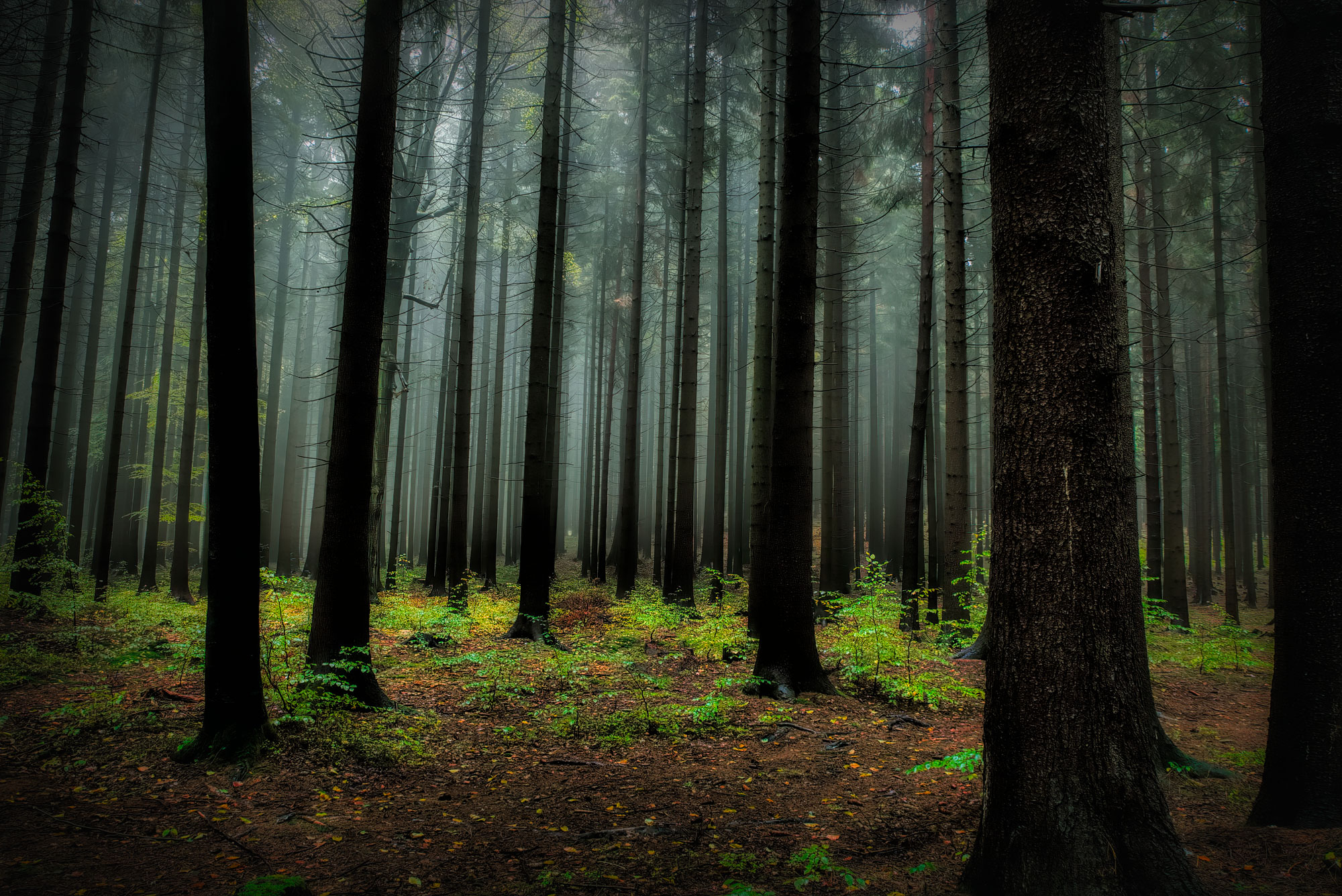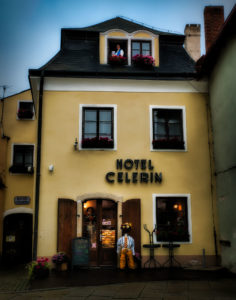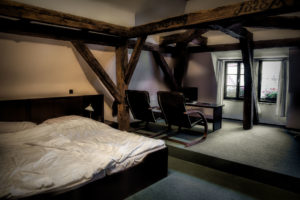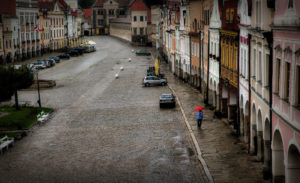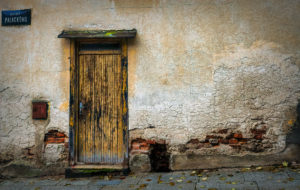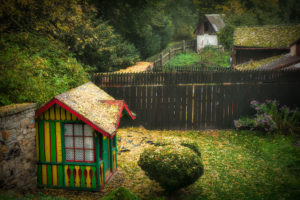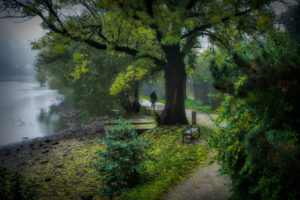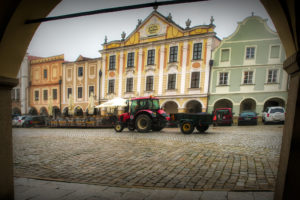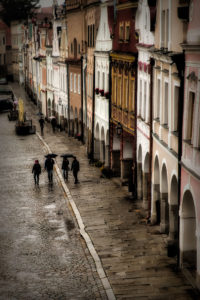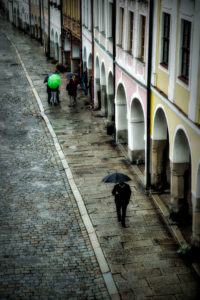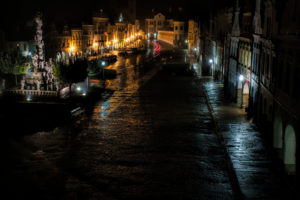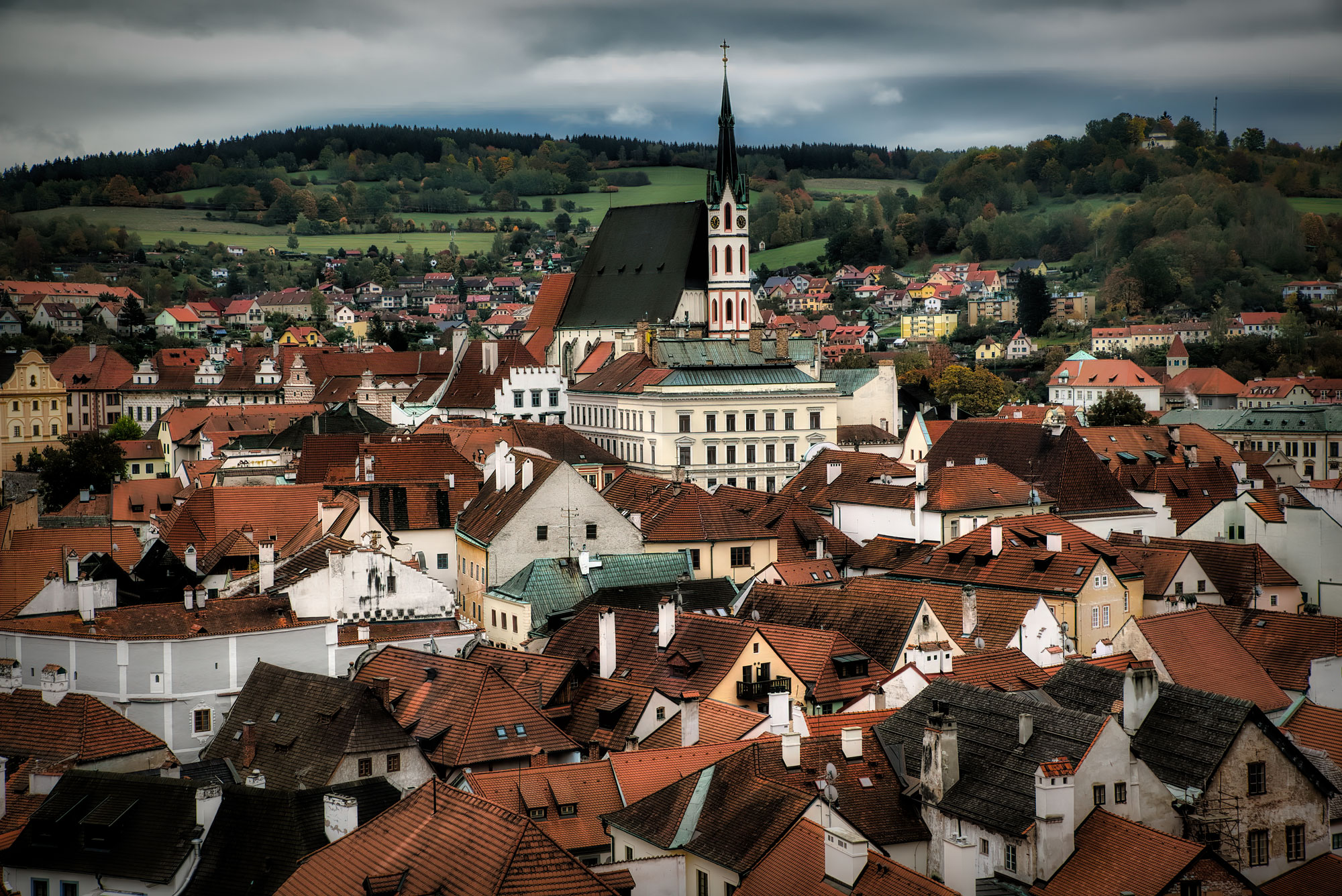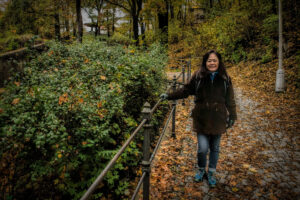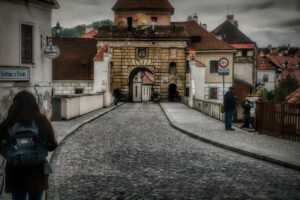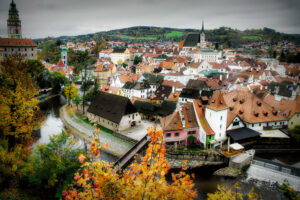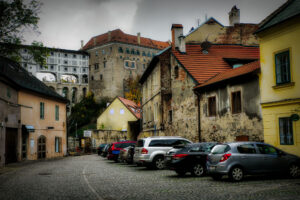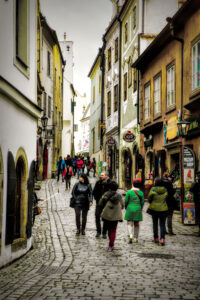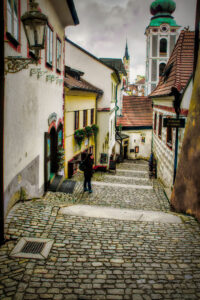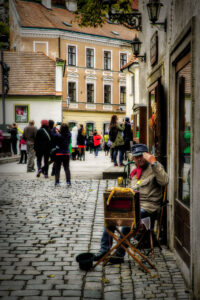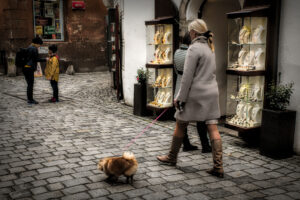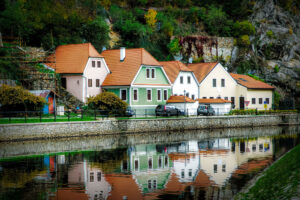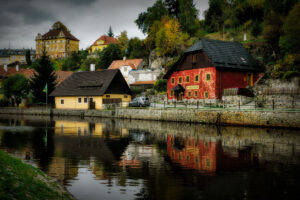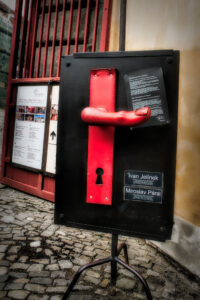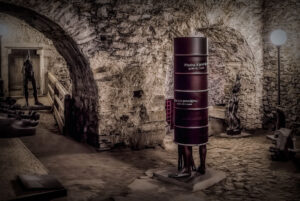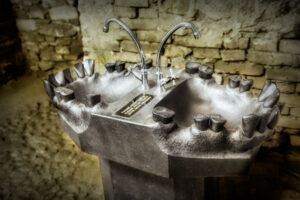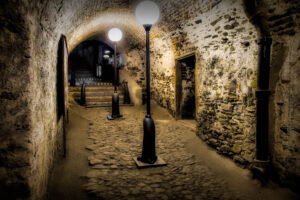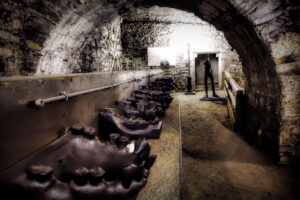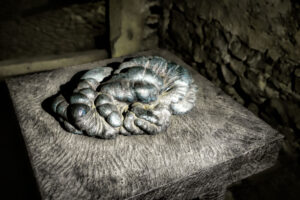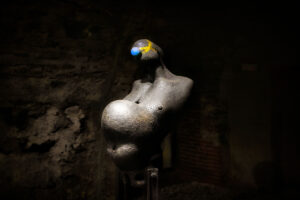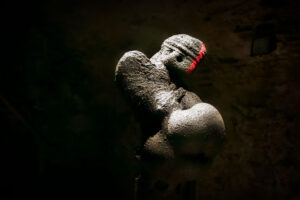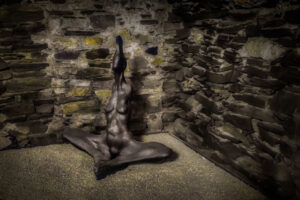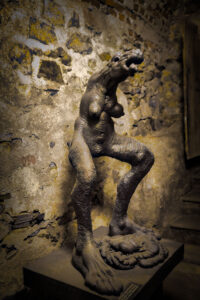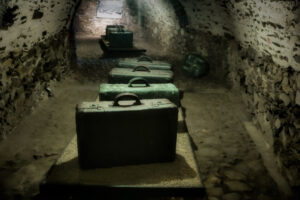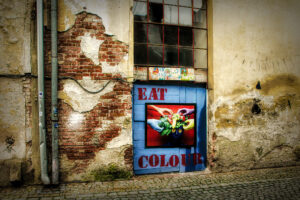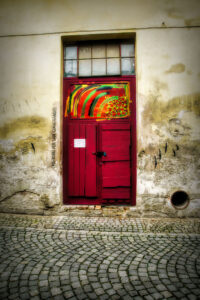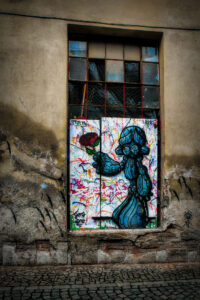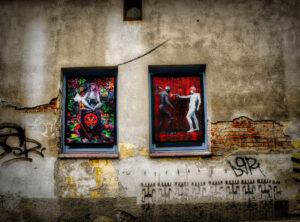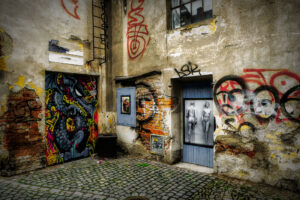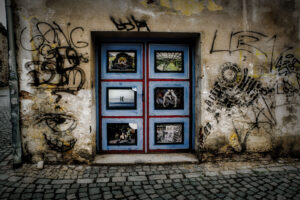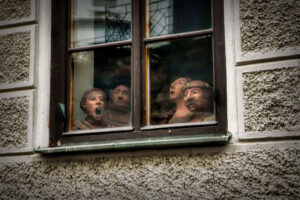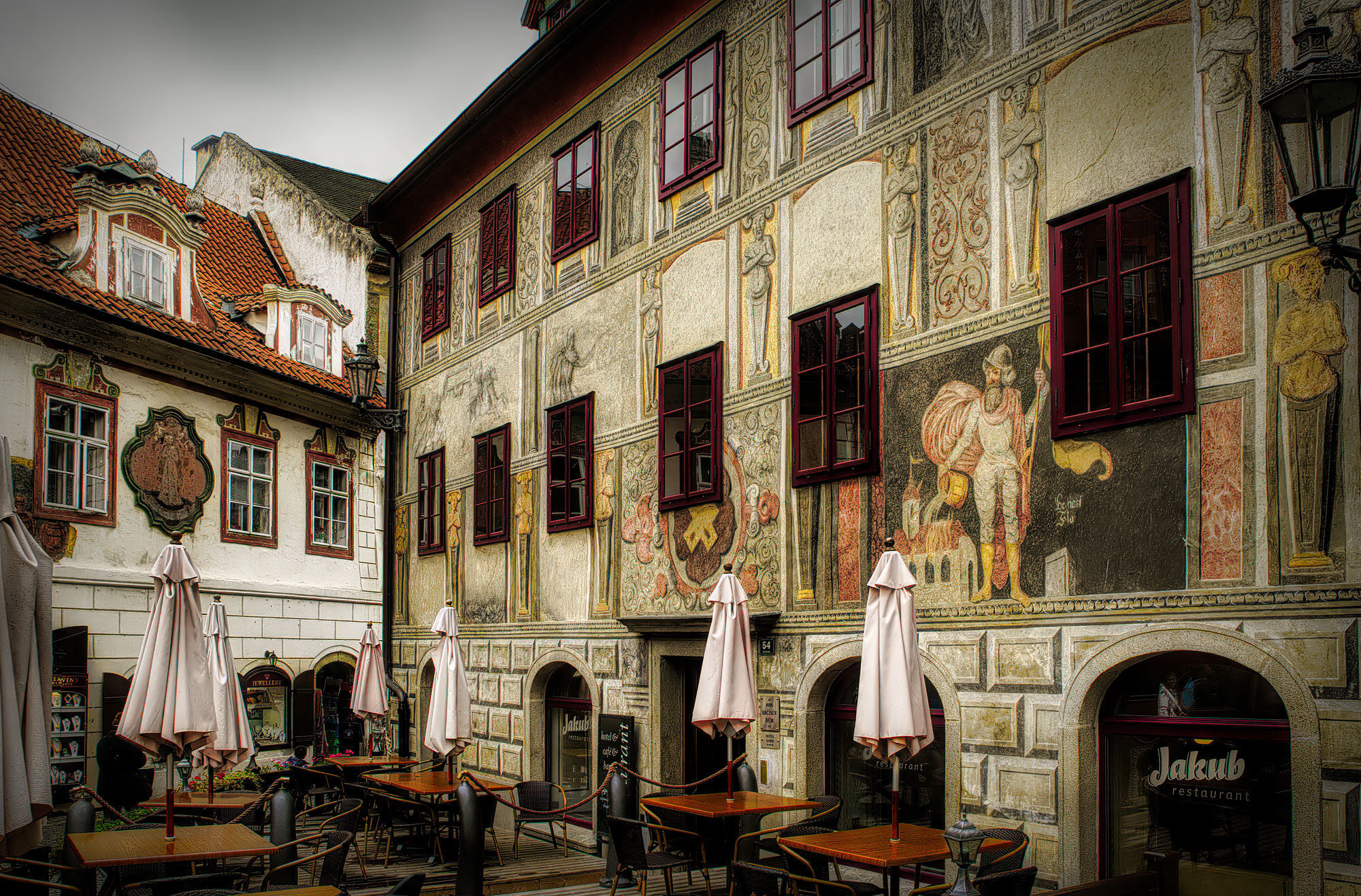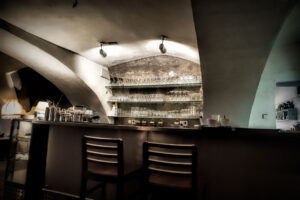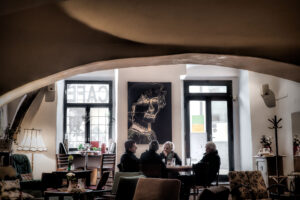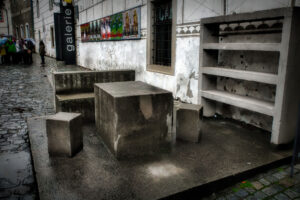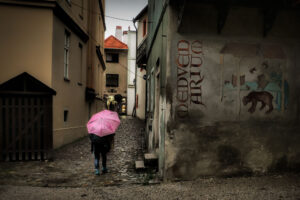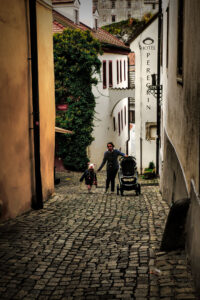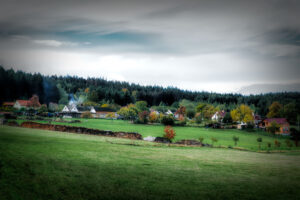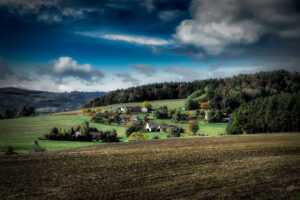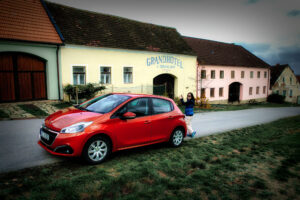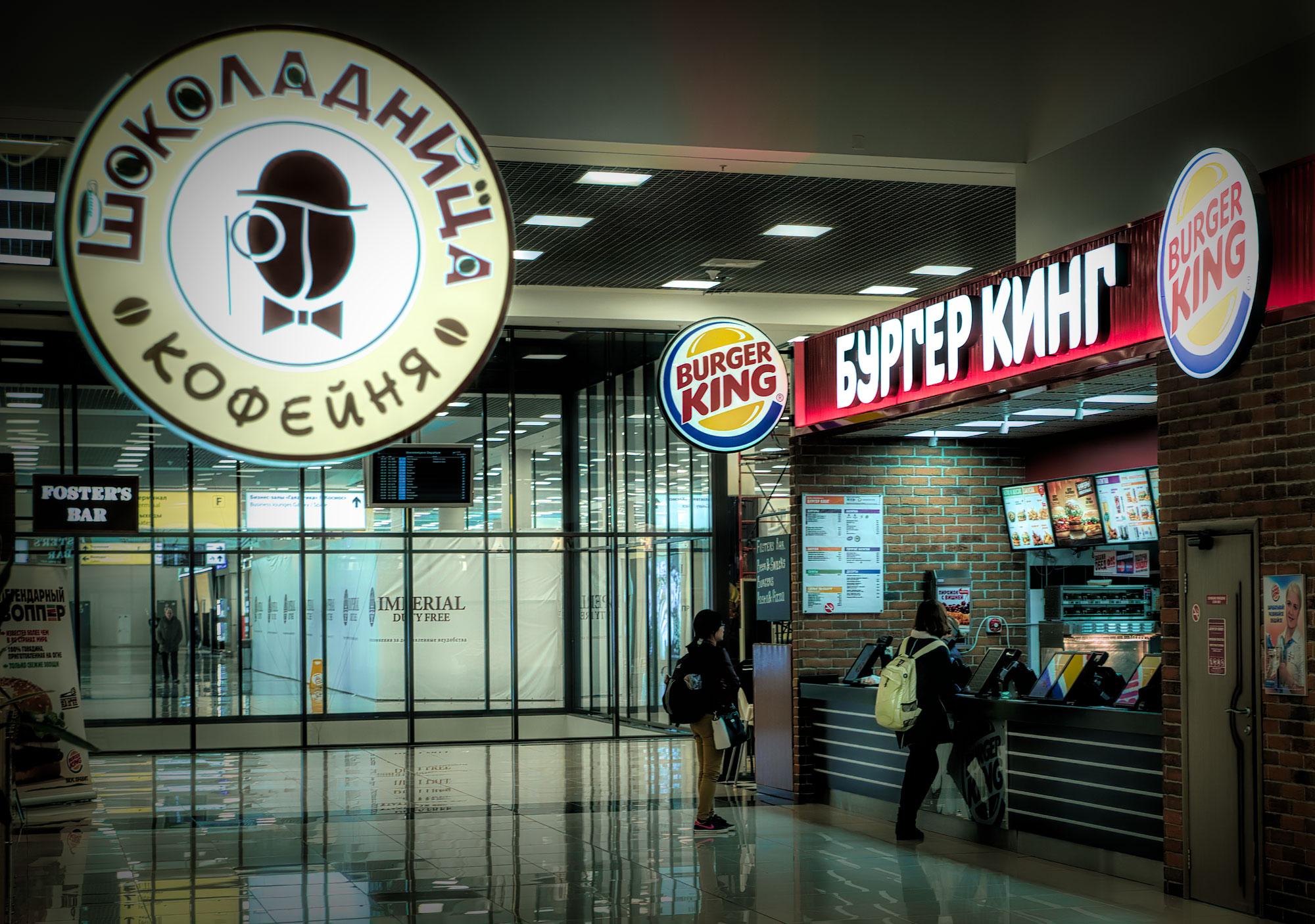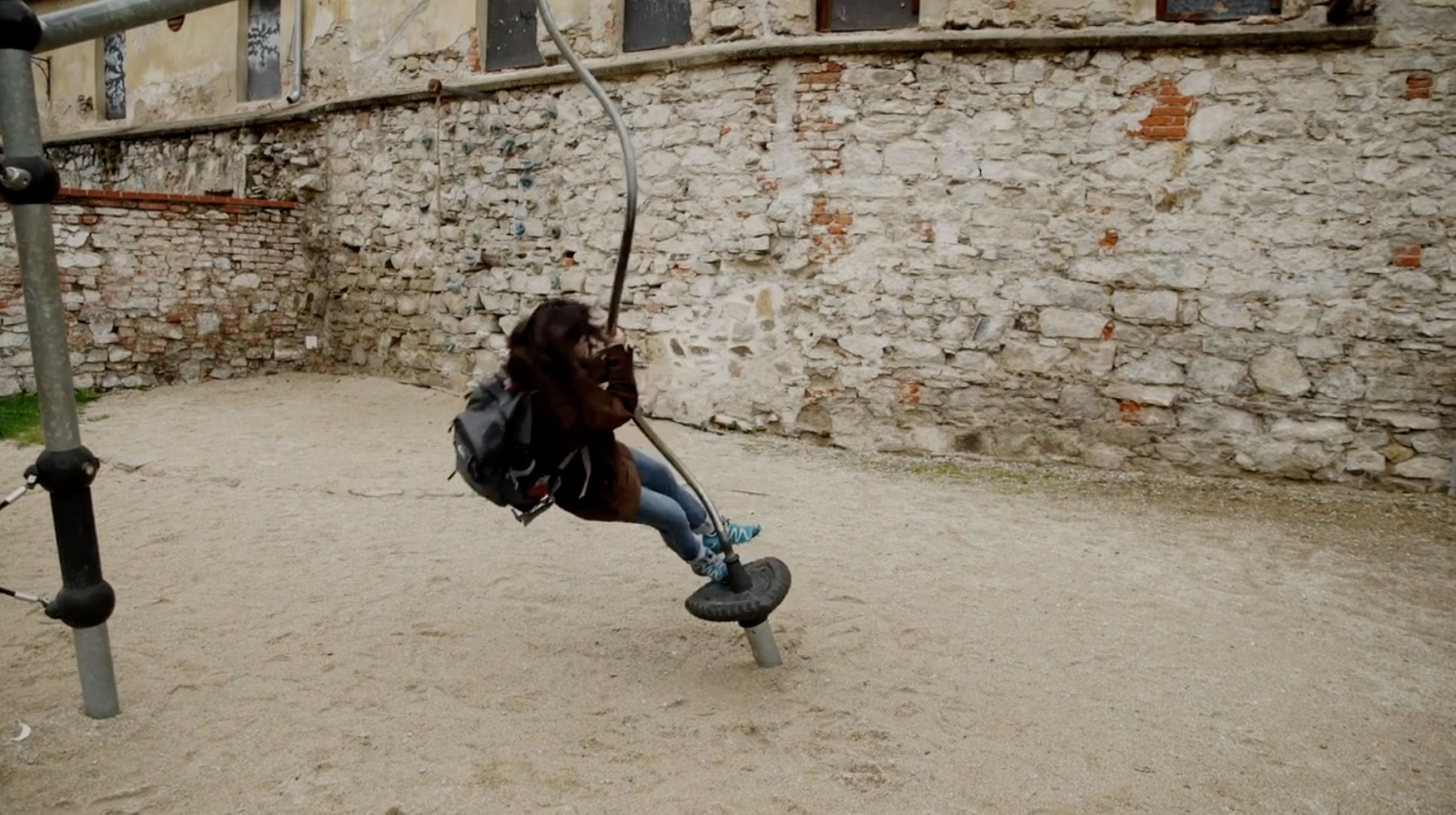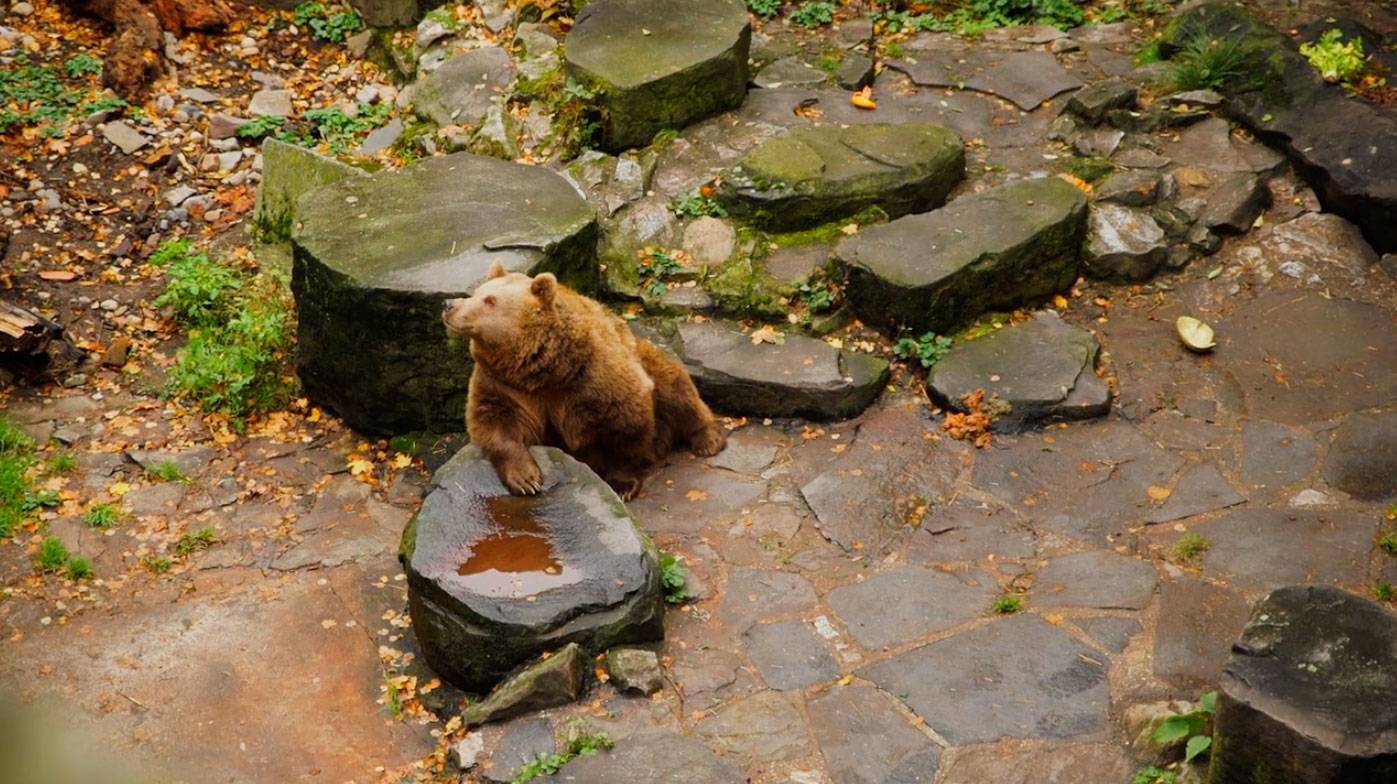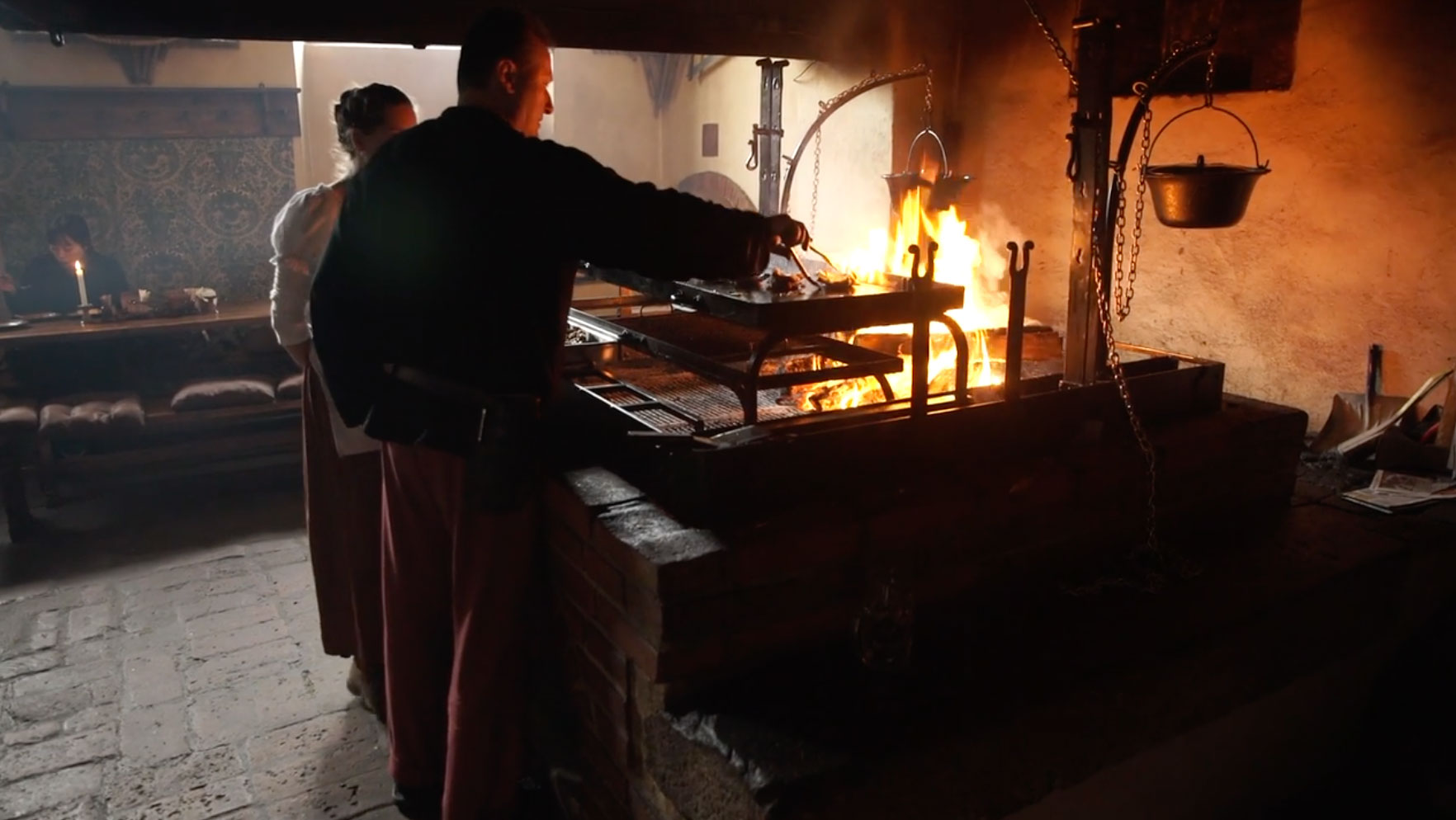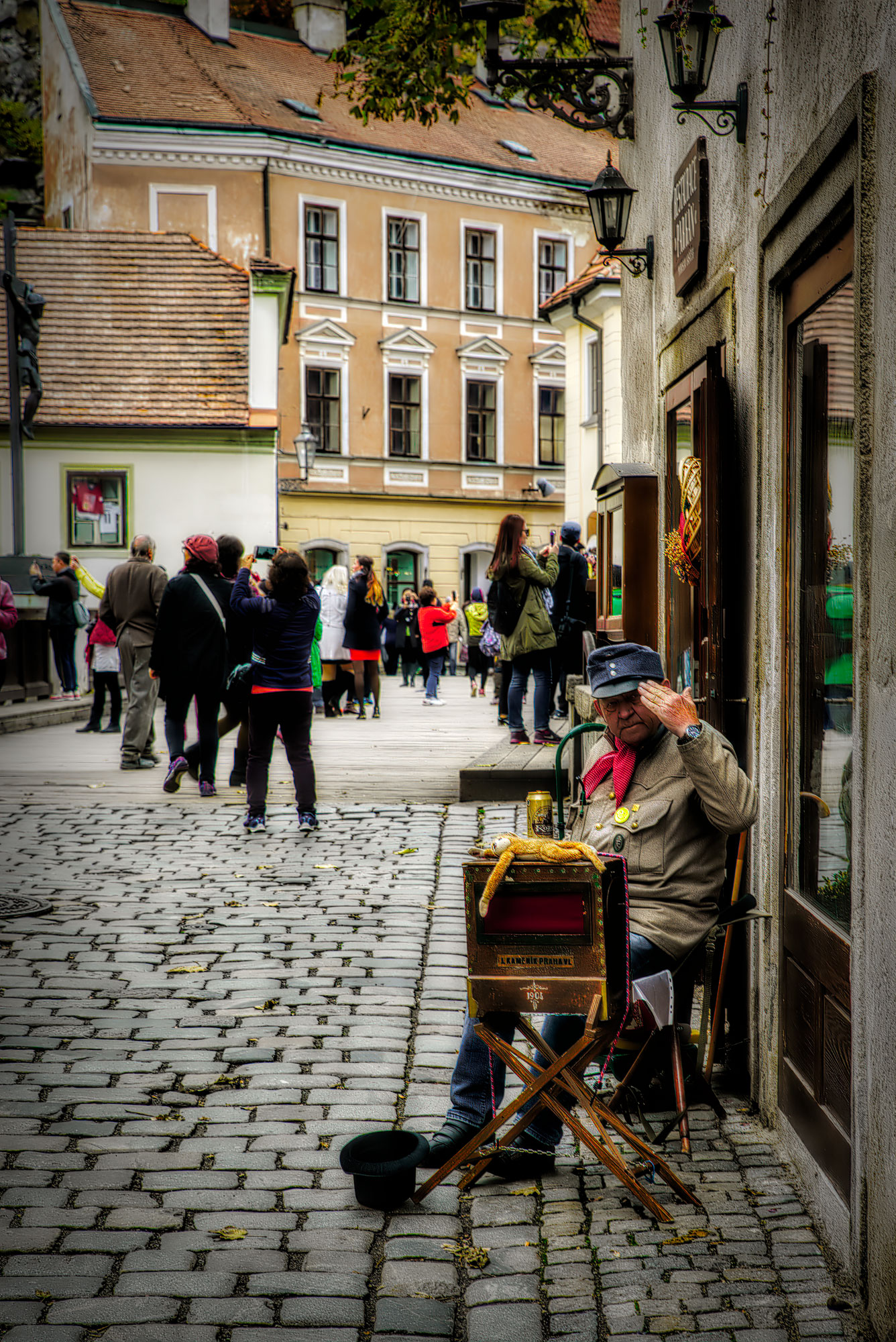A Lap Around The Czech Republic
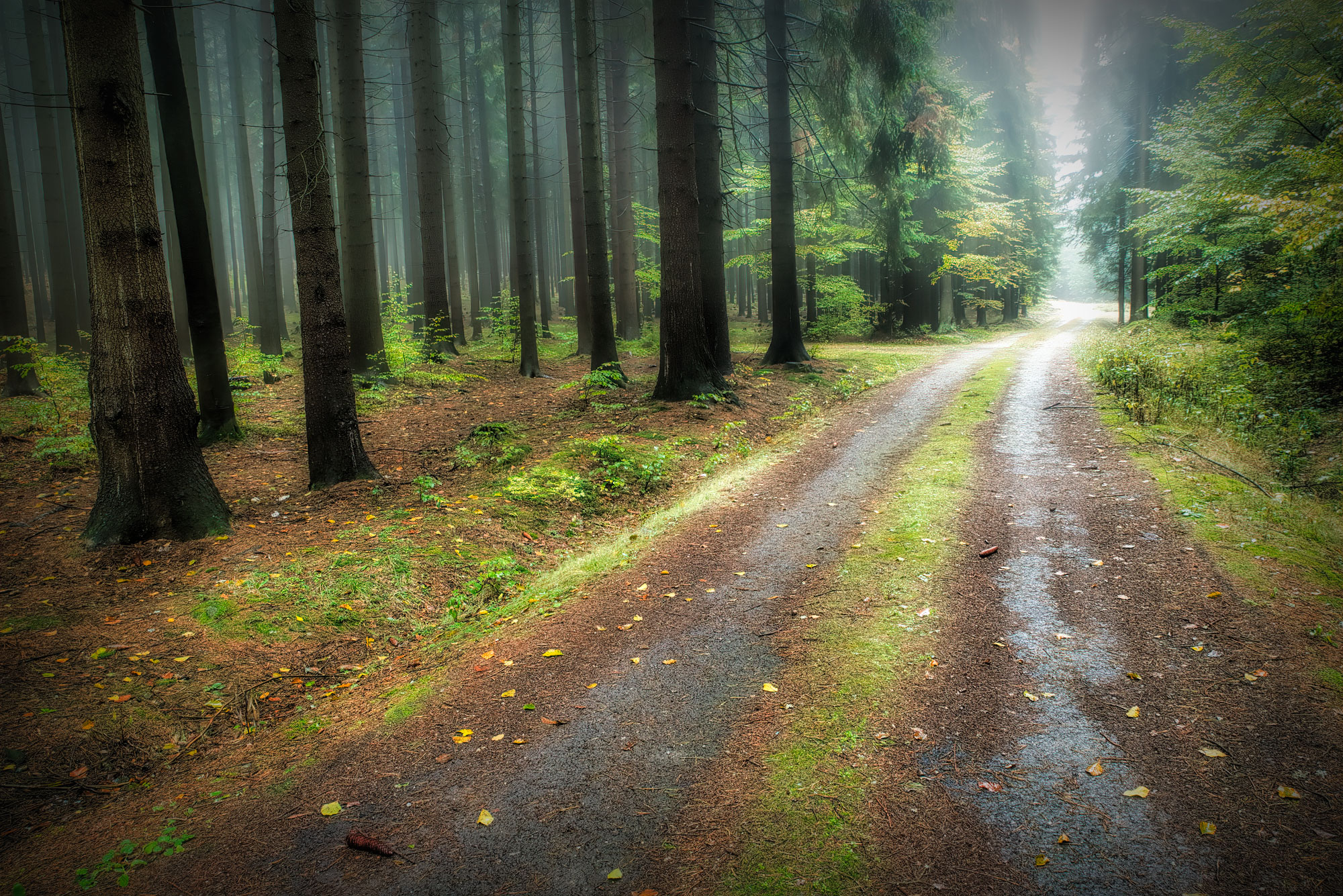
The Road Trip Begins
Prague is great! You could spend a month wandering around and never drink the same beer or see the same thing twice. The same is true if you venture away and roam around the country. We did a lap around the Czech Republic and discovered that while Prague is interesting and friendly, removing yourself from the tourists and the big city draws things get better!
We were in and out of the "Way Back Machine" every day as we drove back roads through the countryside. Thankfully, they drive on the correct side of the road, from the correct side of the car...
Kutna Hora
Leaving Prague airport was like any airport in the US: following the signs that have a big number on them to get out and motivating somewhere. We’re in luck, we ended up on the right road! Our goal today is to lunch in Kutna Hora and find the Strawhouse before dark.
I had been secretly culturing a rhinovirus (aka common cold) since arriving in Prague, the gift from a fellow traveler on the flight in. It was chilly and overcast as we pulled into Kutna Hora a little lost and seeking help. Parking our little red rocket, whom Lucia had already named Lucy, she asked the first person she saw in the street for directions to St. Barbara Church, our first objective. He looked like a local, but when Lucia asked if he could help us, he started looking around and seeing me responded “Sprechen Sie Deutsch”? He did look excited as he asked, but I ruined the meeting by replying “nein” the only word I know in German. He quickly walked away. Standing together, alone on the cobblestone sidewalk, assessing our situation, we don’t know where we are on the map, we're hungry, cold, and getting wet. It’s time for some food and beer! Within minutes, we walked up to Harmonia Cafe. It was mid-morning we're alone. What’s to lose we went in. Good hot soup and great cold beer with directions to the church, plus a bonus conversation with a British couple who live in France and had just arrived by train. We left satisfied, and I had beaten back the cold a little with great Czech Beer!
Amazingly beautiful and complex, St Barbara Cathedral is massive to a simple farm boy from the Midwest. Walking around the outside you marvel at the architecture and its detail and wonder to yourself how did they build this thing? Starting in 1388 this version was last completed in the 1800s.
Inside, the scale is even more striking. It seemed to me to be larger inside than out. Be aware that you are not allowed to bring a tripod or a monopod into the church. You can check them at the desk and retrieve them when you leave.
Walking down cobblestone streets and walkways is exciting; after all, these stones could be several hundred years old! The downside is, that it is harder to walk on cobblestones for a long period of time than you might think. Keep in mind this is the old (ancient) central part of town (touristy) and modern streets, businesses, and pedestrians, and life are not far away. We did enjoy the peaceful solitude on this day.
Sedlec Ossuary or "Bone Church"
Back into the Wayback Machine, this time we'll go way, way back to explain these images from the Sedlec Ossuary (Kostnice v Sedlci in Czech), which is also known as the Bone Church. The ossuary is a small Roman Catholic chapel that is decorated with the bones of over 40,000 people. The bones were exhumed from a nearby cemetery and arranged into elaborate decorations by a local woodcarver in the early 18th century.
The history of Sedlec Ossuary is different and maybe creepy by today's standards. It all started when Henry, a Cistercian abbot, was sent to the Holy Land in Palestina. Henry brought back a jar of soil from the Church of the Holy Sepulchre in Jerusalem, where Jesus was crucified at Golgotha.
When he returned, he spread the jar of soil over the cemetery. There is no record of how big the "jar" was, but because the cemetery was now a holy site, Sedlec became a desired place to be buried. Some people even brought their dead relatives to be buried in the Holy Soil of Sedlec.
In the 14th century, during the Black Death pandemic, tens of thousands of people were buried at Sedlec, leading to the need for the cemetery to be expanded. In the 15th century, a Gothic church was built on the site, later renovated in the Baroque style.
In the early 18th century, a half-blind monk was tasked with organizing the bones accumulated in the cemetery due to the high number of burials. The monk used the bones to create elaborate decorations and chandeliers inside the church, including a chandelier made entirely of human bones. So, was it a half-blind monk or a woodcarver? Probably not a half-blind wood carver...
Today, the Sedlec Ossuary is one of the most visited tourist attractions in the Czech Republic, drawing visitors from all over the world who come to see the unique macabre bone decorations.
Close your eyes, and remember reading Tolkien, C.S. Lewis, or the Brothers Grimm for the first time? What do you see? Fantasy, story, and adventure way beyond what seemed real to you. It was exciting, yes?
It’s raining and very quiet, walking a path in a forest you’ve never seen before, you come into a clearing that leads to a mudhouse with a thatched roof, the door is cracked open but you can’t see inside. Something from somewhere is moving. Suddenly, there stands a tall thin man with inquisitive eyes, long gangly hair, disheveled appearance, smiling he asks, you must be the fetching Lucia? Weakly, she says yes… Welcome to my straw house. Allow me to show you around.
Most of you have heard of, and probably used, Airbnb for your travels. This was our first try! It’s not at all spooky or Brothers Grimm-like. Jan and his wife Mira are wonderful hosts, inviting us for dinner and breakfast before we left (not part of the deal). The straw house is only part of their yoga retreat. Jan studies and is an accomplished yoga master, paints abstract art, and builds straw houses! The main house is very large and was once a command post for the Soviets when they controlled the Czech Republic. Jan told us the Soviets trashed the place before they left, and he and Mira have been repairing it for over 20 years by themselves, one piece at a time. People come worldwide to study and meditate with Jan and Mira. One rule: if you stay in the straw house, you cannot consume meat. They are strict vegetarians, we respected their request and only drank wine!!. They grow most of their vegetables, and Mira served us a wonderful soup with homemade bread, washed down with homegrown mint tea. We would love to go back and visit them again.
If you have time and a way back machine, the forests will tell stories. They require you to sit still and listen.
The Bohemian Revolt began in 1618 and was part of the wider Thirty Years' War, a conflict that engulfed much of Europe in the 17th century. The Bohemian Revolt was triggered by the election of Ferdinand II, a staunch Catholic, as the king of Bohemia. The Bohemian Protestants, who formed a majority in the region, feared that the new king would curtail their religious rights.
The Battle of the White Mountain was fought in the forest near Prague, then the capital of Bohemia. The Protestant forces, led by Christians of Anhalt, were outnumbered and outgunned. They had around 21,000 soldiers, while the Catholic troops, led by Charles Bonaventure de Longueval, Count of Bucquoy, had around 27,000 soldiers and 70 cannons.
The battle lasted only two hours, and the Protestant forces were decisively defeated. They lost around 4,000 men, while the Catholic forces lost only around 700. The Bohemian Revolt was effectively crushed, and Ferdinand II was able to consolidate his power in the region.
The aftermath of the battle was brutal. The victorious Catholic forces executed around 27 Protestant leaders, including 2 governors, 7 senators, and 18 burghers, in what became known as the "Execution of the Twenty-Seven." The battle also marked the beginning of the Counter-Reformation in Bohemia, as the Catholic Church regained its dominance in the region and suppressed Protestantism.
TELC
Still suffering from the cold I acquired on the flight, we stepped into a cafe to get out of the rain, warm up, and have a snack. The proprietor came to us, looked at me, and prescribed grog (a mixture of water, rum, fruit, and spices). Perfect, warming, good for the throat, and provided a positive attitude adjustment. A gift that kept on giving for a while! Local cafes in small towns are great windows to see how people live and interact with each other. Comfort is the state we were in, gratitude felt, and camaraderie experienced.
Click here to listen to the local cafe scuttlebutt!
Telč is known for its well-preserved Renaissance architecture and is a UNESCO World Heritage Site. Its historic center features colorful houses and a beautiful town square. Telč is also known for its castle, which was built in the 14th century and has been renovated over the years. The city is a popular tourist destination and attracts visitors from all over the world.
Getting back on back roads we're heading to ...
CESKY KRUMLOV
Planes, trains, & automobiles, great for travel but where do you stay? Hotel, Hostel, Tent? Having tried those we decided Airbnb! You may have seen in a previous post the Strawhouse, our first Airbnb. Unconventional, rustic, and fun it is not a “normal” Airbnb experience. This time in Cesky Krumlov we rented a small apartment/condo in an old Soviet Era apartment building that had been remodeled. Plenty of room for weary travelers, modern appliances, and quiet. We did get stares from locals, they were friendly and kept to themselves. An easy walk to the historic/touristy area of Cesky Krumlov made this choice a perfect place to set up shop and explore.
During our trip, we used our rental car "Lucy" to get us from one place to another, including grocery stops in a small town to provision up for our stay in Cesky Krumlov. (BTY, grocery stores in The Czech Republic are just like the US, except they seem to have trouble spelling things...) But when we arrive at our overnight bivouac, we walked almost everywhere. Walking through the arch we went wayback again. From our modern Abnb residential area into the old city spanning from several hundred to thousands of years caused my history gland to become inflamed. There is a famous castle, famous artists, great beer and food, and history to soothe the throbbing gland...
In 1240 the Witigonen family built what is now known as Cesky Krumlov Castle. Down in the dungeon is where you will find an art gallery. Mezinarodni Galerie is home to a permanent collection of ceramic sculptures by Miroslav Paral. Walking in the dungeon reminds you that people were much shorter then; in some of the passages, I needed to duck to keep my head separate from the surroundings! One room was full of suitcases cast by Paral reminding us of the Nazi occupation. Jews were told to pack their belongings in cases, label them, and herded into cattle cars. History tells us what happened to the people rounded up and their cases were ransacked by the Nazi’s, valuables stolen the rest discarded. There was never any intention of reuniting the cases with their owners. Traveling through the Czech Republic you can still see remnants of Soviet and Nazi occupation and the damage done.
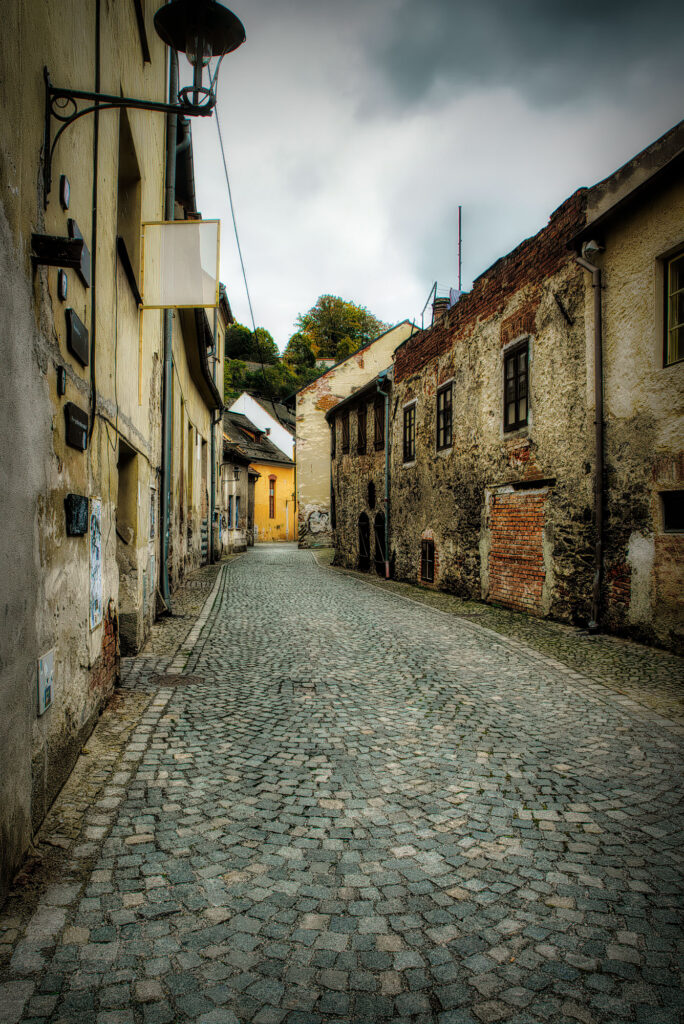
Walking Cesky Krumlov is fascinating, then discovering an area of very old commercial buildings I thought had been occupied by hopeful artists types like we are friends with the LA area was going to be an unexpected treat!
Sadly, didn't meet a soul. Did however see plenty of evidence of a thriving art community. Enjoy the vibe!!
Jakub Restaurant
Traveling and exploring is hard work (hehe), Don’t believe me? Try it; you will want to take a break sometime during your day, and if you’re lucky may find a place like Egon Schiele Cafe. (Egon Schiele was an accomplished painter in the early 1900's) Sitting in the back of the cafe, at a quiet table near the bar we were enjoying strudel and wine when two guys walked in. They headed straight to the bar and began a lively conversation with the bartender. Their backs to us, concentrating on wine and the bartender, getting louder with time. Suddenly, one turned to us and abruptly apologized to Lucia for unsavory comments and their volume. We accepted the apology and their invitation to the conversation. The tall one pegged us as travelers, asking where we lived, and now we’re involved with the guys and bartender, talking about travel, photography, and you may have guessed food! The wine kept coming, and to my surprise, the pours became very generous! An hour went by, then two. The tall one (Jiri) is the head chef at Jakub Restaurant, an upscale, elegant establishment. Jiri studied under Gordon Ramsey and worked as far away from home as Singapore. Food, of course, was the main topic, after several bottles of wine had been consumed, Jiri noticed the clock and jumped up, exclaiming he and David (the other guy who is the head of wait staff) had to leave right away or they were going to be late to work! Before leaving, however, they extended an invitation to Jakub’s, he knew they were fully booked for the evening, asking “I can fit you in if you are there at exactly 6 pm and you only have an hour would you like to come”? Without hesitation we accepted, all we had to do was wander around for a couple of hours and be there on time. At precisely 6 pm we stepped in out of the rain and were greeted by a server who told us they were booked for the evening and could not seat walk-ins tonight. We mentioned Jiri, and she said oh, you’re made it, seating us quickly. Rabbit and Duck were selected (on Chef Jiri’s recommendation) with a great Pinot, fabulous! Just as we prepared to leave, a beautiful dessert was brought out for us, compliments of the Chef. 7 pm arrived with a large group and we departed, loving the hour we had at Jakub’s and the stimulating conversation earlier. Would we recommend Chef Jiri and Jakub’s, why yes!
The Sand in our Hourglass is very low
Sleeping in, we had to pack our kits and get back in Lucy (the rental car) and break out towards Prague airport. We have a very late-night flight to Moscow.
